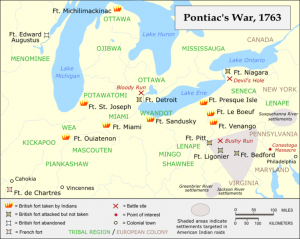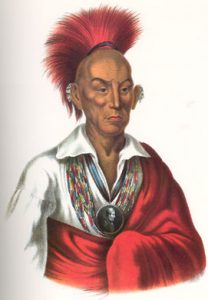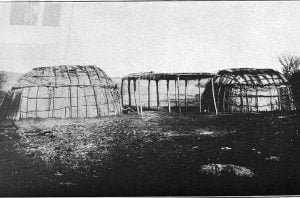Northwest Territorial War of 1812 – Indian Wars
During the War of 1812 a series of battles took place in the Northwest between the British and American forces and their respective Indian allies. This series of battles helped determine the control over the Wabash Valley and along with the Naval victories secured the Northwest for the Americans.




